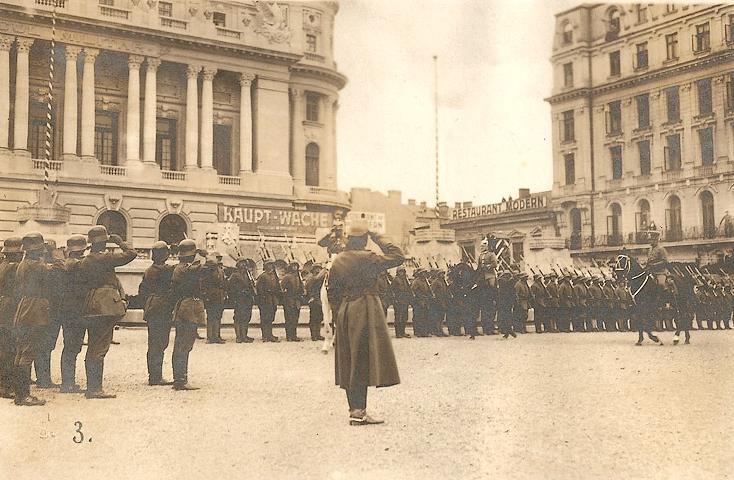The data gathered from Romanian and German archives provides us with an overview of the plunder perpetrated in the occupied territory of Romania during the two years of German military administration. Between December 1916 and November 1918, large quantities of petroleum products, food, fodder and other goods were confiscated for the benefit of the Central Powers, especially Germany.
In order to cover up the extent of the plunder, the German military administration tried to create the pretence of legality by paying for the requisitioned products and the forced labourers with banknotes issued by the Romanian General Bank in Bucharest, which in January 1917 acquired issuing rights, based on a deposit in marks at the Imperial Bank of Berlin. In fact, this deposit belonged to the National Bank of Romania, so for all intents and purposes the issue of banknotes by the Romanian General Bank presented no guarantee, rendering them practically worthless. The Romanian population was required to accept these banknotes, which were temporarily used in the occupied territory.
According to the statistics produced by the German command of Romanian railways, during the occupation, 1.140.809 tons of oil, gasoline and petroleum products were transported from Romania, of which 889.944 tons were sent to Germany, 231.176 tons to Austria-Hungary, 13.825 tons in Turkey and 5.864 tons in Bulgaria. During the same period, 2.161.905 tons of food and animal fodder were shipped out of Romania.
Occupation forces seized a huge number of domestic animals, 550.345 horses, 641.017 cattle, 3.720.590 sheep, 124.031 goats, and 560.812 pigs. These figures did not include the animals destined for the consumption of the occupation troops. German statistics showed that between August 1, 1917 and September 30, 1918, a number of 206.922 cattle, 1.027.971 sheep and 52.198 pigs were used to feed the troops. To this there were added 27.161 cattle sent on the Italian-Austro-Hungarian front of Isonzo, between June and July 1917.
In addition to these official figures, it should be noted that the occupation troops were free to requisition whatever products they needed, and that the statistics did not include those. Each soldier had the right to send home to his family up to 25 kilograms of food, flour, beans, vegetables and preserved meat every week.
A particular case is that of Dobrogea, the Romanian province situated between the Danube and the Black Sea, which was taken over by Bulgaria. On the territory of Tulcea County alone, the occupation troops took 4.000.000 hectolitres of barley, 1.300.000 hectolitres of wheat, 760.000 hectolitres of corn, 750.000 hectolitres of oats and 425.000 hectolitres of rye.
Nearly 18 billion francs worth of damages
Besides the petroleum products and food, that were meant to be transported to Germany, Austria-Hungary, Bulgaria or Turkey or used for the consumption of occupation troops, there was also widespread destruction in the occupied Romanian territory. The damages caused to the Romanian railways were estimated to be 887.769.000 gold francs. The damages caused to the forest fund have been estimated at 503 million gold francs, and 12.000 tons of industrial machinery and 125.000 tons of building materials were confiscated by occupation forces.
In addition to these requisitions, confiscations and damages, the Central Powers forced the occupied territory to provide a 250 million lei war contribution, to be paid as a loan guaranteed by each county.
The total value of the damages produced by the occupation troops, as estimated by the Romanian delegation to the Reparations Commission, in February 1921, amounted to 17.722.302.997 gold francs, of which 8.723.189.568 gold francs in damages produced to the Romanian state, 8.103.298.710 gold francs in damages produced to private citizens and 895.823.759 gold francs in damages produced to local administrations.
Bibliography:
Victor Atanasiu, Atanasie Iordache, Mircea Iosa, Ion M. Oprea Paul Oprescu, România în Primul Război Mondial [Romania in the First World War], Military Publishing House, Bucharest, 1979.
Translated by Laurențiu Dumitru Dologa

